ELEMENTARY SCHOOL
2nd Grade
Lauren Phillips
 Geology & the study of soil — Hardness and softness in rocks, soil, and our students
Geology & the study of soil — Hardness and softness in rocks, soil, and our students
“I asked, ‘Do you think when we want our way, we can get hard as a rock, and feel nothing is going to change us?’ ‘Yes!’ Lilly said. She began to take part [in the lesson] seriously.” Ms. Phillips also taught about the way geology and reading have something important in common. One result, she writes, is: “Claire…changed dramatically….Her reading improved 4 levels.”
3rd Grade
Helena Gvili
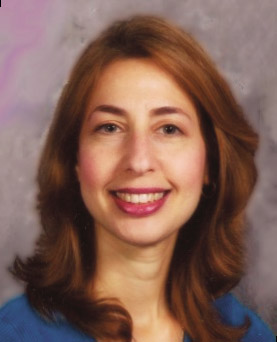 Lesson on density using eggs and water
Lesson on density using eggs and water
Why density is always a oneness of heavy and light & matter and space (or full and empty). This lesson illustrates theory & experiment at the elementary level. It’s Part 2 of an article in the San Antonio Register (Texas). Part 1 includes a lesson on descriptive writing.
3rd Grade
Barbara McClung
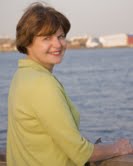 Lessons on earth science & biology: (1) igneous, sedimentary, & metamorphic rock; and (2) symbiosis & the hermit crab
Lessons on earth science & biology: (1) igneous, sedimentary, & metamorphic rock; and (2) symbiosis & the hermit crab
How hard and soft can be beautifully together in rocks; how a marine mollusc needs a creature very different from itself; and what we can learn about ourselves from both. This article is titled “Learning vs. Prejudice!”
4th Grade
Helena Gvili
Lesson on light and color
Ms. Gvili writes about this “science lesson I taught on light and color….[It] enabled my 3rd grade students, who had been angry and failing, to see that the world they were confused by has a sensible, wonderful structure: it puts opposites together, such as hidden and shown, many and one.” Published in The Deming Headlight (Deming, New Mexico).
MIDDLE SCHOOL
8th Grade
Bénédicte Caneill
 Earth Science lessons. The profile of the ocean floor & plate tectonics (accretion and subduction)
Earth Science lessons. The profile of the ocean floor & plate tectonics (accretion and subduction)
Taught by a teacher who at first saw “many bored looks.”— Her students learned how opposites like addition and subtraction are made one beautifully in the earth and are in themselves. “There has been a tremendous change….they were excited and able to remember facts, because they saw a deep relation to themselves.”
JUNIOR HIGH SCHOOL BIOLOGY
7th Grade
Christopher Balchin
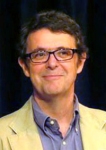 Symbiosis. The hermit crab & anemone are different but need each other and get along together.
Symbiosis. The hermit crab & anemone are different but need each other and get along together.
Children who made “fun of each others’ accents and skin colour” — came to “have a tremendous sense of fellow-feeling” and learned! Published in The Teacher, journal of the National Union of Teachers, United Kingdom.
HIGH SCHOOL BIOLOGY
Sally Ross
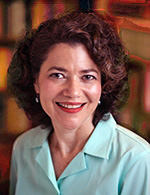 Viruses. Part of a larger unit on disease
Viruses. Part of a larger unit on disease
Published in the Missouri State Post. “Students were excited to see that fearsome viruses are made up of the same opposites—power and delicacy, large and small—that are elsewhere in reality.” Title of this article is: “Through the Study of Viruses, Prejudice is Opposed: Aesthetic Realism Teaching Method”
Rosemary Plumstead
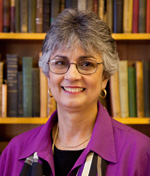 Lesson on the constituents of blood
Lesson on the constituents of blood
The chemical composition of our blood is like that of ancient seas–it is a oneness of past and present. Our erythrocytes (red blood) cells steadily are born and expire in our bodies, a oneness of stability and change.
Lesson on the heart: systemic & pulmonary systems; valves
Its structure is a oneness of power and delicacy; the heart beats powerfully yet contains delicate, transparent, tough valves. And the heart is a oneness of separation and junction: it has two separate circulatory systems, systemic and pulmonary, yet they join rhythmically and together supply blood to the whole body. Do we want, like the heart, ‘to have a good relation of being apart from and also joined to other people and things?’
“It is the grandeur of this method that through it not only do failing students succeed, but that students who seemed distressed, angry — even cruel — also change.”
HIGH SCHOOL ENVIRONMENTAL SCIENCE
Rosemary Plumstead
About regions, trees, symbiosis, & more, including the structure of a leaf.
Published as Part 3 & Part 4 in the San Antonio Register with this title: “Through the Aesthetic Realism Teaching Method Knowledge Opposes Anger— & Students Learn!”
Take, for example, the opposites of delicacy & strength in the way a leaf is made: “As I held up a large leaf, students commented on the size: “Wow! It’s so big!” “It’s very large, but do you think it’s delicate?” I asked.” Also see “A New Care for Knowledge and People” In The Right of Aesthetic Realism to Be Known.